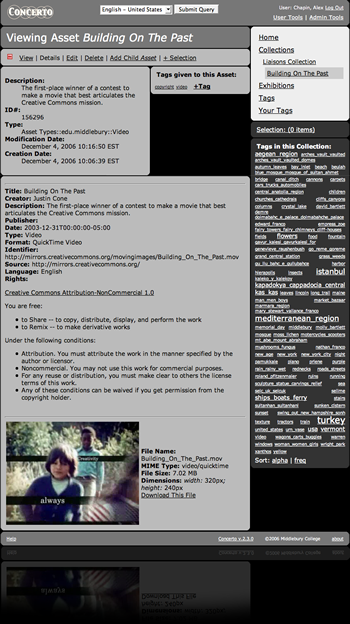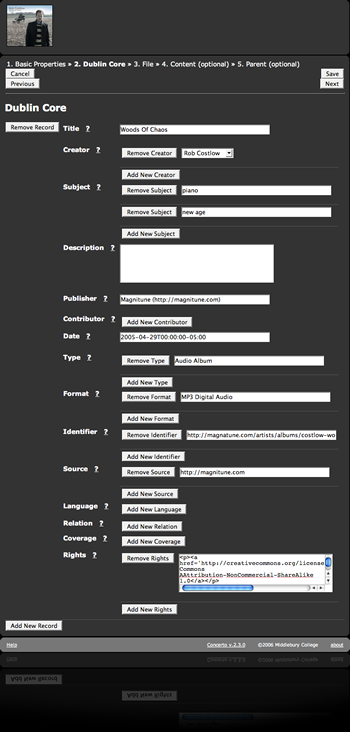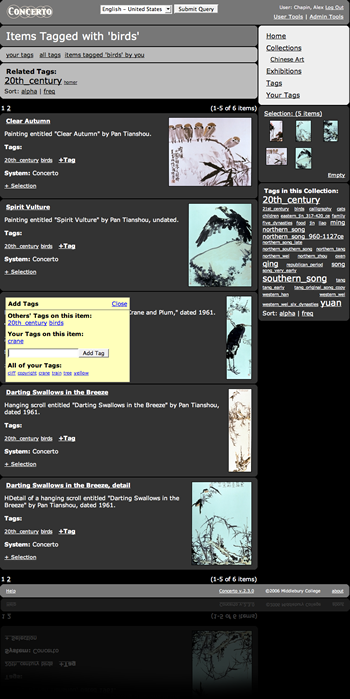Metadata refers to auxiliary and descriptive information about an asset. For example, if an asset is a digital photograph then the data would be the image file itself, while the metadata could include information such as photographer, title, description, subject, date, shutter-speed, copyright, etc.
Concerto is designed to encourage the use of standard structured metadata schemas such as Dublin Core and the Visual Resource Association (VRA) standard for cataloguing cultural objects, while also allowing for the creation of custom metadata schemas designed to meet the needs of specific idiosyncratic collections.
In addition to structured metadata, Concerto allows all users with view access to assets to add tags or unstructured metadata and will generate "tag clouds" for any given collection or user as well as for all collections and all users resulting in a variety of "folksonomies" that complement the more formal taxonomies generated by the structured metadata.
What is data and what is metadata is not always obvious nor crucial in the usage of Concerto. For example metadata schemas can hold arbitrary information including data, such as the text of an essay, or metadata, such as the title of that essay. The metadata label is placed on them only to reflect their primary usage, not any limitations.
While Concerto only requires a display name for all Assets, structuring and entering rich metadata for assets is an important way to add value to a Collection. An image for example, is a very distinctive thing, but not one that can be searched for. Adding rich metadata that includes the creator, title, subject terms (keywords), and other fields — such as those in the Dublin Core standard — can allow that image to be located by searching in a variety of ways, making that image more useful and valuable than it would otherwise be.





